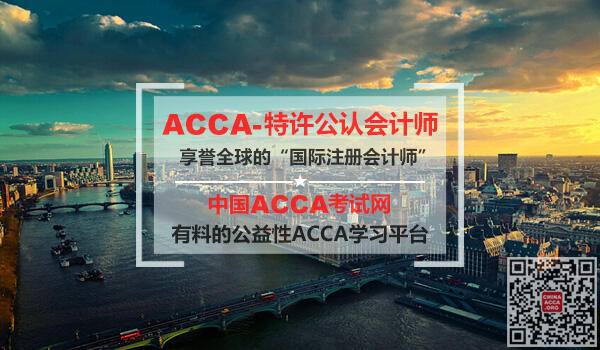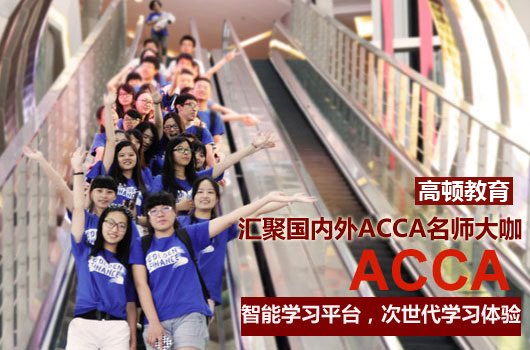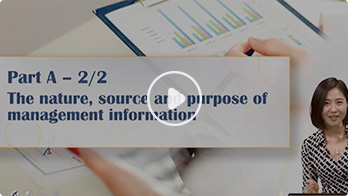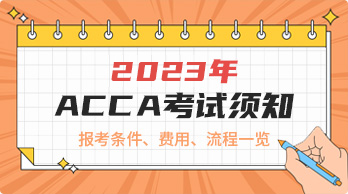众所周知,ACCA考试科目F2全称“Management Accounting”,主要讲的是管理会计相关的内容。整体来说课程难度不大,毕竟属于基础阶段的科目嘛!但差异分析的部分考试难度还是有点,另外一些财务比率的计算也是需要学员们重点掌握好的。

1.Target cost=target selling price–target profit=market price–desired profit margin.
2.cost gap=estimated cost–target cost.
3.TQM:
①preventing costs
②appraisal costs
③internal failure costs
④external failure cost
4.Alternative costing principle:
①ABC(activity based costing)
②Target costing
③Life cycle
④TQM
5.Time series:
①trend
②seasonal variation:⑴加法模型sum to zero;⑵乘法模型sum to 4
③cyclical variation
④random variation
6.pricipal budget factor关键预算因子:be limited the activities
7.budget purpose:
①communication
②coordination
③compel the plan
④motivative employees
⑤resource allocation
8.Budget committee的功能:①coordinated②administration
9.Budget:①function budget②master budget:1.P&L;2.B/S;3.Cash Flow
10.Fixed Budget:不是在于固不固定,而是基于一个业务量的考虑,financail expression.
Flexible Budget:包含了固定成本和变动成本,并且变动成本的变化是随着业务量的变化而改变。
11.Flexible Budget的优点:
①recognize different cost behavior.
②improve quality and a comparison of like with like
③help managers to forecast cost,revenue and profit.
12.Flexible Budget的缺点:
1假设太简单。
2需要更多的时间准备预算编制。
13.Controllable cost is a“cost which can be influenced by”its budget holder.大部分的变动成本是可控的,non-controllable cost为inflation.
14.Budget Behavior:
①participate approach
②imposed budget
15.payback投资回收期的缺点:
①ignore profitability
②the time value of money is ignored
③没有考虑项目后期带来的经济利益
④arbitray武断
16.payback投资回收期的优点:
①easy to calculate
②widely use
③minimize the effect of the risk and help liqidity
★如果在算投资回收期的时候,发生折旧,则需要加回折旧,因为折旧是非现金项目。
17.(1+real interst rate)*(1+inflation rate)=(1+nominal interest rate)
18.NPV=present value of future net cash flow–present value of initial cost
19.永续年金=A/i
20.每年的汇报是相同的就查看年金现值系数表,不同的就查看年金系数表。
21.EAR=CAR=APR=(1+r/n)n–1有效年利率
22.IRR:(based on cash flow analysis)
①IRR>cost of capital,NPV>0,worth taking
②IRR<cost of capital,NPV<0,not worthwhile.
23.ARR=average profit/average investment(ARR是基于profit)
Average investment=(initial investment–residual value)/2
24.type of standard:
①basic standard
②current standard
③ideal standard
④attainable standard
25.Variance
1.Material Variance
⑴total material variance=standard cost–actual cost
⑵material price variance=(standard price–actual price)*actual quantity
⑶material usage variance=(standard usage of actual output-actual usage)*standard price.
2.Direct Labor Variance
⑴standard pay–actual pay
⑵Labor rate variances=(standard rate–actual rate)*actual hrs of actual output
⑶Labor efficiency variances=(standard hrs of actual output–actual hrs)*standard rate
3.Variable production overhead variances
⑴Total variable O.H.variance=standard cost–actual cost
⑵Variable O.H.expenditure variance=(standard rate–actual rate)*actual hrs
⑶Variable O.H.efficiency variance=(standard hrs of actual output–actual hrs)*standard rate
4.Fixed O.H.expenditure variance
⑴Fixed O.H.Expenditure variance=budget expenditure–actual expenditure
⑵Fixed O.H.volume=(actual output-budgeted volume)*standard hrs per unit*standard rate per hr.
⑶Capacity variance=(actual hrs worked–budgeted hrs worked)*standard rate per hr
⑷Efficiency variance=(standard hrs worked for actual output–actual hrs worked)*standard rate per hr⑴+⑵:Fixed O.H.total variance=fixed O.H.absorbed–actual expenditure
5.Sales variance
⑴Sales price variances=(actual price–budget price)*actual sales units
⑵Sales volume variances=(actual sales units–budget sales units)*standard profit per unit
(absorption)
⑶Sales volume variances=(actual sales units–budget sales units)*standard CPU(marginal costing)
6.Idle time variances
Idle time variance=(expected idle time–actual idle time)*adjusted hr rate
26.The elements of a mission statement including:
①Purpose
②Strategy
③Policies and standards of behavior
④Values and culture
27.A critical success factor is a performance requirement that is fundamental to competitive success.
28.Profitability ratios
①Return on capital employed(ROCE)
=profit before interest and tax/(shareholders’funds+long-term liabilities)×100%
②Return on equity(ROE)=profit after tax/shareholders’funds×100%
③Asset turnover=sales/capital employed×100%
=sales/(shareholders’funds+long-term liabilities)×100%
④Profit margin=profit before interest and tax/sales×100%
Profit margin×asset turnover=ROCE
29.Debt and gearing ratios
①Debt-to-equity ratio=long-term liabilities/total equity×100%
②Interest cover=PBIT/Interest×100%
30.Liquidity ratios
①Current ratio=current assets/current liabilities
②Quick ratio(acid test ratio)=current assets minus inventory/current liabilities
31.Working capital ratios
①Inventory days=average inventory*365/cost of sales
②Receivables days=average trade receivables*365/sales
③Payables days=average trade payables*365/cost of sales(or purchases)
32.Non-financial performance measures
Non-financial performance measures are considered to be leading indicators of financial performance.
①Market share
②Innovation
③Growth
④Productivity
⑤Quality
⑥Social aspects
33.The balanced scorecard:
①financial perspective②external perspective
③customer perspective④learning and innovation perspective
34.Benchmarking:
①Internal benchmarking
②Competitive benchmarking
③Functional benchmarking
④Strategic benchmarking
35.Value analysis is a planned,scientific approach to cost reduction,which reviews the material composition of a product and the product';s design so that modifications and improvements can be made which do not reduce the value of the product to the customer or user.
36.Four aspects of';value';should be considered:
①Cost value
②Exchange value
③Utility value
④Esteem value
37.ROI=PBIT/capital employed*100%
Widely used and accepted;As a relative measure it enables comparisons to be made with divisions or companies of different sizes.
38.RI=PBIT-Imputed interest*capital employed.
Possible to use different rates of interest for different types of assets;Cost of finance is being considered.
▎本文由中国ACCA考试网综合采编,来源:互联网。版权归原作者所有,如有侵权请联系删除。关注微信公众号“ACCA考试网”,随时随地掌握ACCA相关信息。
▎本文由中国ACCA考试网综合采编,来源:互联网。版权归原作者所有,如有侵权请联系删除。关注微信公众号“ACCA考试网”,随时随地掌握ACCA相关信息。




 考经分享
考经分享
 发布时间:2017-01-13
发布时间:2017-01-13 

 复制本文链接
复制本文链接 模拟题库
模拟题库

 148
148




















